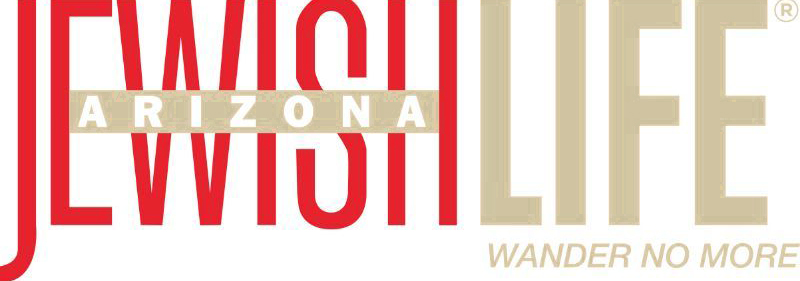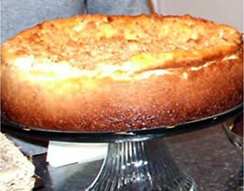Each year as we light the menorah, the beautiful symbol of the Jews, we recall the meaning of Hanukkah.
We can imagine what it meant to the Jews of the Second Temple in 165 B.C.E., when Judah Maccabee lit the seven-branched menorah he had ordered to be made and proclaimed the holiday of Hanukkah (dedication). Three years before, on that very day, the Syrian King who called himself Antiochius IV Epiphanes (manifest god) and his armies had massacred the Jews of Jerusalem and profaned the Temple, seizing the great golden menorah that stood on the altar (1 Maccabees, v. 20).
The first menorah, as described in Exodus 25:26-26:9, was created for the Tabernacle in the wilderness by the divinely inspired artist Bezalel, whose “wisdom, insight and knowledge” enabled him to understand God’s intricate design. The menorah was to be hammered from a talent of gold, all of a single piece, with three branches emerging from either side of the shaft. The menorah was to have seven lamps. In his book “Horeb,” Rabbi Samson Raphael Hirsch describes the adornments as “cups shaped like almond blossoms, each with its knob and petals.” He interprets the explicit instructions given in Exodus: “[O]n the middle shaft, there were thus a total of four flower cups, two knobs and two flowers. In addition, there was one knob under each pair of branches that came forth from the sides of the menorah … and a knob under two branches of one piece with it. Thus the menorah had a total of 22 flower cups, 11 knobs, and nine blossoms.”
The menorah in the Tabernacle is to be kindled with “pure, pressed olive oil” and remain alight “from evening until morning” as “an eternal decree.” (Exodus 27:20-21) And so the seven-branched menorah, interpreted by artists through the ages, stands on the altars of our synagogues to this day. The Hanukiah, with eight lamps and a separate candle used to kindle them (the shamash, or servant), came into use during talmudic times and is lit only at Hanukkah.
That first Hanukkah commemorated the victory of the Jews in a series of battles against the Greek/Syrian armies, the last numbering 65,000 soldiers, according to historian Nathan Ausubel. As recounted in 1 Maccabees — the apocryphal book, whose Jewish author is considered a reliable historical source — the king had ordered the Jews to “profane sabbaths … to build altars for idols, to sacrifice swine.” Anyone possessing the sacred books was put to death; “they put to death the women who had their children circumcised” (v. 41-60).
Looking back on these events in an account that relies heavily on 1 Maccabees, the eminent Jewish historian Josephus (37-101 C.E.) states, “And from that time to this we celebrate this festival and call it Lights.” Then he lapses into a reverie of exceptional pathos: “I suppose the reason was that this liberty beyond our hopes appeared to us, and that thence was the name given to that festival.”
The Talmud recounts the miracle that occurred when the Jews went in search of sacramental oil to light the menorah. They found only one small flask, enough for one day. They kindled the menorah, and the oil lasted for eight days. According to tractate Shabbat 24a, it is incumbent upon us to “publicize the miracle” by placing the Hanukkah lamp where passersby can see it, preferably by the door or at the window.
The great golden menorah stood in the Second Temple for more than 200 years. Then the invincible Roman armies, led by Emperor Titus, came to conquer Jerusalem. The Jews ferociously defended the besieged city, even as flames engulfed the inner sanctuary of the Temple in 70 C.E. The Romans were so proud of their victory that they erected the Arch of Titus in Rome, which prominently depicts the menorah among the spoils of war.
In one part of his article “Mysteries of the Menorah” (Commentary, 2008), scholar and Rabbi Meir Soloveichik discusses the heated controversy that ensued when, “in the late 1940s, the nascent state of Israel chose the menorah depicted on the arch of Titus as its symbol.”
The argument led to a mystery: whether the menorah depicted on the monument was really the menorah of the Second Temple. Soloveichik points out that the stone image has a “large stepped pedestal,” while “Halakhic tradition long insisted that it [the ancient menorah] stood on a three-legged base, and this has been confirmed by archeological evidence” dating to the first century. The menorah on a “tripod” base appears on Jewish coins, on the mosaic floors and walls of ancient synagogues, on graves in Jewish catacombs, and in illuminated Hebrew Bibles.
Soloveichik concludes that Israel’s official seal, featuring a menorah flanked by olive branches, “perfectly embodies the unredeemed condition of the world, a world in which there is both much to be joyously celebrated and much that remains to be mourned and to be longed for.”
History blazes up before us when we light the Hanukkah candles, and the menorah spreads light over the world. Hirsch describes the joy inherent in the design when he writes that “this whole light-bearing tree” signifies “a life of eternal, fruitful blossoming.”






